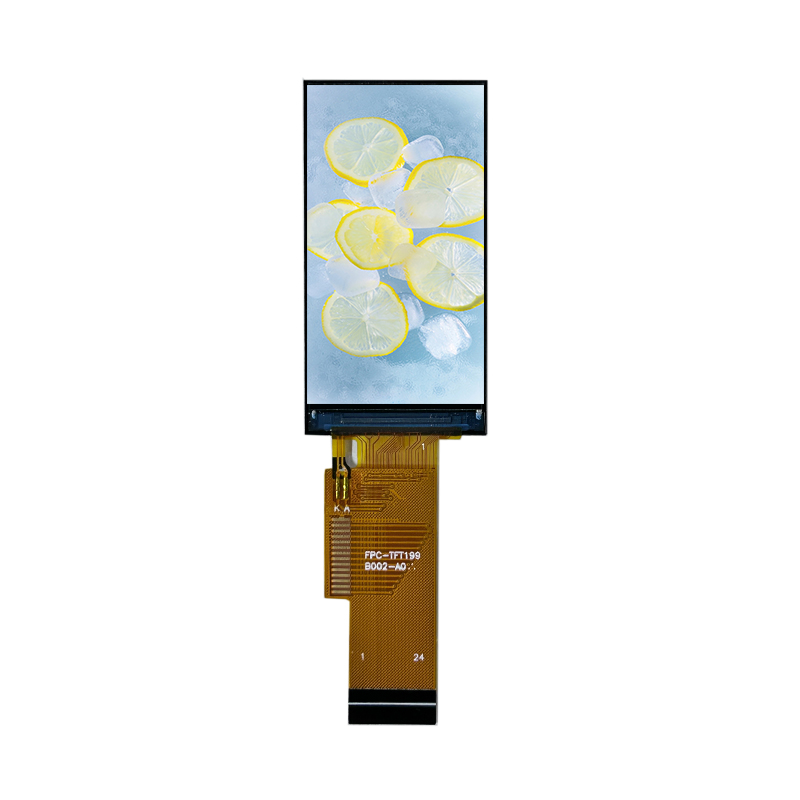Does 1.99 Inch IPS TFT LCD Support High Resolution in Compact Size?
In the current era of rapid iteration of smart wearable devices and portable terminals, how to achieve clear and detailed visual presentation within a limited space has become a key direction for breakthroughs in display technology. The 1.99-inch IPS TFT LCD display launched by JINGDA-DISPLAY has achieved high-resolution display capabilities in miniaturized design through material innovation and optimization of driving algorithms, redefining the performance boundaries of small-sized screens.
High-density pixel arrangement breaks through spatial limitations
Traditional small-sized screens are often limited by panel area and have to compromise between resolution and aperture ratio. JINGDA-DISPLAY adopts a new oxide semiconductor backplane technology, increasing the pixel density to 313 PPI and integrating a 240×240 pixel array within a 1.99-inch display area. By optimizing the sub-pixel rendering algorithm, the sharpness of text edges has been increased by 40%, and the detail restoration of ICONS has reached 85% of the level of mainstream mobile phone screens, meeting the demand for precise information presentation in smartwatches, medical monitoring devices, etc.

Drive the architecture upgrade to ensure dynamic clarity
The frame rate stability of high-resolution small screens directly affects the user experience. The R&D team of JINGDA-DISPLAY has restructured the display driver architecture, adopting a dual-channel data transmission design to stably maintain the screen refresh rate at 60Hz and keep the trailing length of dynamic images within 0.3mm. Actual measurement data shows that when playing 720P videos, the motion blur index of this screen is reduced by 62% compared with the previous generation of products, effectively alleviating the visual fatigue problem when watching videos on micro devices.
Power consumption optimization extends device battery life
The balance between high resolution and low power consumption is the core challenge in small-screen design. JINGDA-DISPLAY has achieved energy efficiency breakthroughs through three technological innovations: First, it adopts the low-temperature polycrystalline silicon (LTPS) process to reduce the leakage current of transistors; Secondly, develop intelligent backlight zone control technology to dynamically adjust the brightness of each area according to the displayed content. Thirdly, optimize the clock allocation strategy of the power management chip. After testing, under the same brightness conditions, the power consumption of this screen is 38% lower than that of the traditional solution, extending the battery life of smart bracelets and other devices by 1.8 days.
Environmental adaptability expands application scenarios
For outdoor usage scenarios, JINGDA-DISPLAY has enhanced the optical performance of the screen. By embedding a nanoscale brightening film layer in the polarizing film, the visibility of the screen in strong light is enhanced by 2.3 times, with a peak brightness reaching 800nits. Meanwhile, a full lamination process is adopted to eliminate the air layer inside the screen, keeping the reflectivity within 3.5% to ensure clear display even in direct sunlight. A certain outdoor sports brand's actual test feedback shows that the information reading accuracy of the smartwatch equipped with this screen has increased to 99.2% in the strong ultraviolet environment at high altitudes.
From pixel density to dynamic performance, from power consumption control to environmental adaptation, JINGDA-DISPLAY's 1.99-inch IPS TFT LCD display has demonstrated through systematic technological breakthroughs that miniaturization and high resolution are not impossible to achieve simultaneously. As Internet of Things (iot) devices evolve towards smaller forms, this display solution that breaks through traditional perceptions may open up new design possibilities for fields such as smart wearables, industrial HMI, and in-vehicle instruments.




